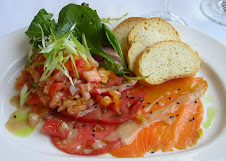The water cycle refers to the continuous exchange of water within the hydrosphere, among the atmosphere, soil water, outside water, earth water, and plants. Water chains moves perpetually through each of these regions in the water chain consisting of following transmit processes:
• Evaporation from oceans and other water bodies into the air and transpiration from land plants and animals into air.
• Precipitation, from water vapor condensing from the air and falling to earth or ocean.
• Runoff from the earth usually reaching the sea.
Most water vapor over the oceans returns to the oceans, but winds carry water vapor over land at the same rate as runoff into the sea, about 36 Tt per year. Over land, evaporation and transpiration contribute another 71 Tt per year. Rainfall, at a rate of 107 Tt per year over land, has several forms: most commonly rain, snow, and hail, with various offerings from fog and dew. Condensed water in the air may also refract sunshine to produce rainbows.
• Evaporation from oceans and other water bodies into the air and transpiration from land plants and animals into air.
• Precipitation, from water vapor condensing from the air and falling to earth or ocean.
• Runoff from the earth usually reaching the sea.
Most water vapor over the oceans returns to the oceans, but winds carry water vapor over land at the same rate as runoff into the sea, about 36 Tt per year. Over land, evaporation and transpiration contribute another 71 Tt per year. Rainfall, at a rate of 107 Tt per year over land, has several forms: most commonly rain, snow, and hail, with various offerings from fog and dew. Condensed water in the air may also refract sunshine to produce rainbows.


 Calorie restriction
Calorie restriction























